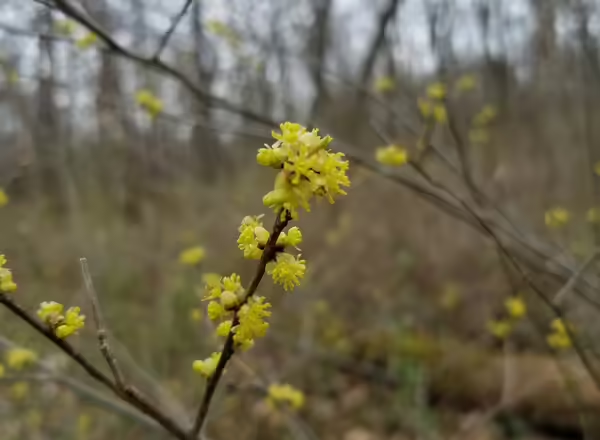
Spring is nearly upon us and the plant world is beginning to wake up, with hints of the growing season popping up daily. A variety of early-blooming garden plants are on display right now, from snow crocus (Crocus sieberi) to daffodils (Narcissus spp.). The spectacular spring flower display has been set in motion.
In woodlands, the early risers are also showing their stuff. I’ve already noticed a harbinger of spring (Erigenia bulbosa) and I am sure spring beauties (Claytonia virginica) will be around before long.
The challenge of native spring ephemerals for gardeners
All of these early-blooming species provide critical pollinator support, offering food resources for our insect friends that first emerge. However, gardeners interested in adding Illinois native early bloomers may come up short as many of our native spring ephemerals are not well represented at garden centers or other sources for plant materials.
There are a few exceptions, with Virginia bluebells (Mertensia virginica) being one of the most commonly cultivated spring ephemerals, but most are simply plants that the average gardener cannot access. In some cases, spring ephemeral wildflowers are simply too sensitive to survive the stresses of our garden spaces. They require healthy, intact woodland ecosystems to thrive and we simply cannot recreate those conditions in the landscape.
In other cases, the one-season-of-show that these plants offer just isn’t enough draw for many gardeners, growers, or plant breeders. So, lack of interest in a plant that only provides impact during spring may have lead to little or no commercial offerings of these species. Given the specific growing requirements, the ability to predictably propagate these plants and distribute them to the public may be yet another limitation that growers face.
Given these challenges, native-focused gardeners must often turn to trees and shrubs in order to provide pollen and nectar in garden spaces during early spring. Native shrubs can also provide other seasons of interest, making great structural plants for any garden design.

Spicebush: A favorite for early color
One of my all-time favorite native shrubs, spicebush (Lindera benzoin) is just starting to bloom in our home gardens this week. Since I live in a rural area, I would guess that urban specimens are already in full bloom when you factor in the urban heat island effect.
In woodlands, spicebush is often one of the very first things to flower, preceding most of the spring ephemeral flowering display. It has become my favorite over the years for this early burst of color. You can't miss spicebush in bloom this time of year since most of everything else is bare, and I really enjoy finding its numerous yellow blooms in the wild each spring.
Another reason why this plant tops my list is for its use in the landscape. It’s a relatively adaptable species that typically grows well in conditions other than overly dry or exposed sites. In addition, it tolerates quite a bit of shade, growing in the shadiest of spaces, from wooded bluffs to rich bottomland forests. This adaptability makes it an ideal plant for shade gardens, making it my go-to recommendation when folks ask about native shrubs for shade gardens.

For pollinators, it provides an early source of pollen and nectar, which can be critical resources for solitary queen bees that emerge early. Its tiny and abundant yellow flowers cover stems, creating a wonderful ornamental display.
Later in the season, it has attractive light green leaves and a pleasing medium texture with a gently rounded growth habit and oblong leaves. In fall, it sports bright red berries and an excellent, bright yellow color as the season ends. Winter interest comes from its speckled, lenticel-covered stems.
Spicebush is dioicous, meaning that male and female flowers occur on separate plants. So, it's best to plant in groups, hoping some will be the showier female plants.
Some other spring flowering native shrubs to consider include red chokeberry (Aronia arbutifolia), black chokeberry (Photinia melanocarpa), and many of our native viburnum species (Viburnum spp.).